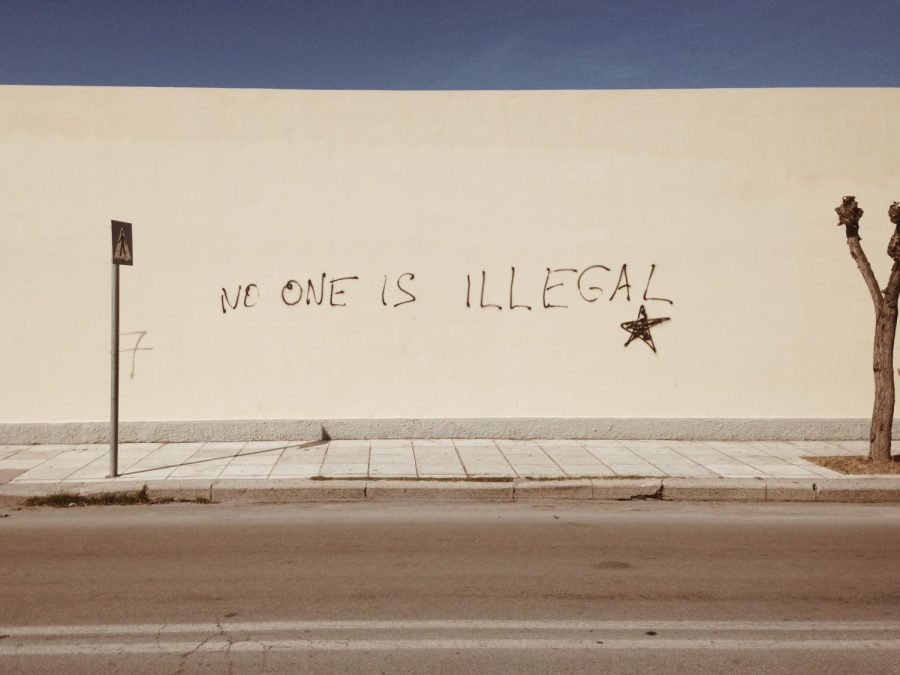OPINION: Immigration contradictions on full display
Courtesy Photo
October 21, 2022
In a press conference held in September of this year, White House press secretary Karine Jean-Pierre stated that the entire Western Hemisphere currently faces a new migration challenge due to individuals from Cuba, Venezuela and Nicaragua fleeing their homelands as a result of falling authoritarian regimes. This statement is not only factually inaccurate, it completely glosses over the crippling sanctions imposed on these nations by former President Donald Trump’s administration and continued by President Joe Biden — a policy decision that has been proven to cause more harm toward the civilian population of targeted nations rather than the intended governing bodies.
Last month’s comments arrived on the heels of one of the most egregious political stunts in recent history. Migrants who were previously detained at the U.S.-Mexico border were loaded onto chartered planes and sent by Florida Gov. Ron DeSantis to New York, Washington, D.C., and other municipalities deemed “sanctuary cities.”
Most notably, migrants were left at the doorsteps of Vice President Kamala Harris’ residence at the Naval Observatory in the U.S Capitol, as well as on the streets of Martha’s Vineyard, Massachusetts, where former President Barack Obama is known to own property. The stunt has been condemned by many on both sides of the political aisle and has resulted in a lawsuit against DeSantis, alleging the roughly 50 individuals sent to Martha’s Vineyard were lured onto the planes under false promises of housing, schooling and job placement, among other resources.
In many ways, this can be seen as an escalation of Texas Gov. Greg Abbott’s efforts in recent months to dispose of migrants by chartering buses to sanctuary cities. It is unclear just how many individuals without legal status the state of Texas has bussed out of state, but estimates range anywhere from 8,051 to 9,033 individuals. And as of August of this year, the state of Texas has spent over $12.7 million in its relocation efforts.
The term migrant itself falls far short of describing the specific situation faced by each individual removed from the southern border. Instead, we see labels such as migrants and sanctuary cities politicized and thrown about in an attempt to intentionally obscure the United States’ ill-conceived policies on immigration.
Officials are unable to arrive at a consensus on the exact number of individuals being apprehended at the border. The U.S. Customs and Border Protection reports there have been over 2.1 million expulsions carried out under Title 42 since its implementation at the beginning of the COVID-19 pandemic. However, experts claim that the number is much lower than perceived due to the number of instances of repeated crossings by the same individual. According to the American Immigration Council, nearly 1 in 3 apprehensions were by individuals on at least their second attempt crossing.
At its core, Title 42 was created as a way to fast-track the expulsion of persons crossing the border during times of public health emergencies. The order was originally issued by the Trump administration in March 2020 and continues to remain in place despite Biden declaring the pandemic to be officially over.
It shouldn’t go without notice that many of the individuals that arrived in Martha’s Vineyard last month were not simply “migrants,” but were in fact individuals seeking asylum. As a matter of policy, individuals fleeing certain countries designated by the U.S. State Department can be granted legal protections when entering the United States by being given what is known as Temporary Protected Status. TPS-designated countries include El Salvador, Honduras, Ukraine, Nicaragua and Venezuela, among other nations.
To a larger extent, the United States’ immigration policies can often be reflective of its foreign policy objectives as well. Countries deemed friendly toward the United States are given more leeway on matters of immigration, whereas countries that are seen as adversarial are seen as an inconvenience, and their people are treated as such.
Recall when more than 22,000 Ukrainians were admitted along the U.S.-Mexico border in the months following the launch of Russia’s special military operations in eastern Ukraine. The U.S. Department of Homeland Security has confirmed over 100,000 Ukrainian arrivals in total as of July 2022, yet one would be hard-pressed to find a single headline from corporate media outlets at that time suggesting any immigration constraints of any sort.
Contrast this with the images we saw of Border Patrol agents on horseback fashioning the reins of their saddles into whips to repel Haitians who were seeking asylum, following the unrest after the assassination of former Haitian President Jovenel Moïse. The vast majority of the Haitian asylum seekers along the border crossing in Del Rio, Texas, were sent back to Haiti by the Biden administration under Title 42. Roughly 20,000 Haitians were expelled in the first year of Biden’s term in office alone.
As of Oct. 12, the Biden administration has moved to expand Title 42 toward Venezuelans arriving in the United States.
With Florida’s largely immigrant labor force now tasked with rebuilding parts of the state in the aftermath of Hurricane Ian, and as busloads of individuals continue to arrive in Washington, D.C., and elsewhere, it is important we be specific when discussing the individual forces at play that ultimately leave someone with no choice but to uproot their lives in search of greater economic opportunity.
